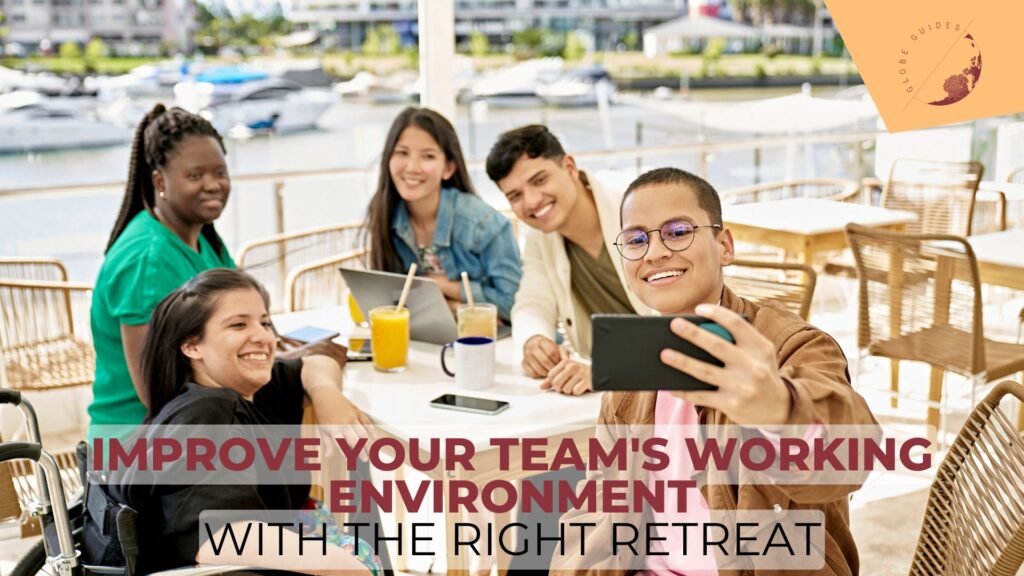One effective way to boost team morale, enhance communication, and promote personal growth is through well-planned team retreats. According to Gallup, only 34% of U.S. employees feel engaged at work, highlighting the need for strategies that foster better workplace connections and motivation. However, selecting the right retreat can be daunting with so many options available. By focusing on team-building, leadership development, mindfulness, and innovation retreats, you can understand the unique benefits of each and make an informed decision that meets your team’s specific needs.
Igniting Team Synergy Through Retreats
While monetary incentives can provide short-term motivation and rewards for employees, they often fall short in fostering long-term engagement and satisfaction. Financial rewards alone do not address underlying issues such as work-life balance, job satisfaction, and personal development. Over time, employees may become accustomed to financial bonuses, leading to diminishing returns in motivation.
In contrast, team retreats offer a holistic approach to enhancing employee satisfaction and engagement. These retreats provide an opportunity for employees to step away from their daily routines and immerse themselves in activities that promote bonding, relaxation, and personal growth. Retreats can significantly boost morale, enhance communication, and foster a sense of camaraderie among team members.
Additionally, retreats contribute to building a positive work culture and enhancing team cohesion. Employees feel more valued and motivated when they experience a supportive work environment and opportunities for growth beyond just financial compensation. Investing in team-building activities, professional development, and wellness programs through retreats can create sustained engagement and reduce turnover.
Types of Team Retreats
Retreats can be tailored to meet the unique needs of any team, maximizing productivity and engagementent, there are numerous types of retreats, but the most common ones focus on team-building, leadership development, mindfulness and wellness, innovation and creativity, and combination retreats, these categories provide a general framework:
1. Team-Building Retreats
Activities: These retreats typically include activities such as obstacle courses, group problem-solving exercises, outdoor adventures like hiking or rafting, and interactive workshops designed to improve trust and teamwork.
Benefits: Team-building retreats help break down barriers between team members, build trust, and improve overall team dynamics. They are particularly effective for new teams or teams that have recently undergone changes.
Example: A three-day retreat in a mountain resort where team members engage in a series of challenges that require cooperation and strategic thinking, followed by debriefing sessions to discuss lessons learned and how they can be applied in the workplace.
2. Leadership Development Retreats
Activities: These retreats often feature leadership workshops, seminars with industry leaders, role-playing scenarios, and strategic planning sessions. Participants might also engage in activities that challenge their decision-making and problem-solving abilities.
Benefits: Leadership development retreats are ideal for grooming future leaders and enhancing the skills of current leaders. They foster a culture of continuous improvement and strategic thinking within the team.
Example: A weekend retreat at a luxury hotel with sessions led by leadership coaches, interactive workshops on effective communication and decision-making, and networking events with leaders from other industries.
3. Mindfulness and Wellness Retreats
Activities: These retreats typically include yoga and meditation sessions, wellness workshops, nature walks, and activities focused on relaxation and self-care.
Benefits: Mindfulness retreats help team members manage stress, improve focus, and boost overall well-being. They are particularly beneficial in high-stress environments where burnout is a concern.
Example: A week-long retreat at a wellness center offering daily yoga and meditation classes, workshops on mindfulness practices, and opportunities for nature hikes and spa treatments.
4. Innovation and Creativity Retreats
Activities: These retreats often feature brainstorming sessions, design thinking workshops, creative problem-solving activities, and sessions with innovation experts.
Benefits: Innovation retreats encourage out-of-the-box thinking and can lead to new ideas and solutions that drive business growth. They are ideal for teams tasked with developing new products, services, or strategies.
Example: A four-day retreat at a creative studio where team members participate in design thinking workshops, collaborate on innovative projects, and attend talks by leading innovators in their field.
5. Combination Retreats
Activities: Combination retreats can include elements from all the types mentioned above, such as team-building exercises, leadership workshops, wellness activities, and innovation sessions.
Benefits: These retreats offer a holistic approach to team development, addressing various aspects of personal and professional growth. They are particularly effective for large teams with diverse needs.
Example: A five-day retreat at a resort featuring a mix of team-building challenges, leadership seminars, mindfulness practices, and creative brainstorming sessions.
How to Choose the Right Retreat for Your Team
A well-planned retreat offers employees a chance to step away from their daily routines, engage in meaningful activities, and build stronger relationships with their colleagues. To ensure that your team retreat is a resounding success, it’s essential to carefully consider some key factors:
Set Clear Objectives
Before planning the retreat, clearly define what you want to achieve. Whether it’s improving team dynamics, fostering innovation, or providing relaxation, having clear objectives will guide your planning process and ensure that the retreat meets your goals.
Choose the Right Location
The location of the retreat plays a crucial role in its success. Consider a setting that aligns with the retreat’s purpose. For a mindfulness retreat, a serene natural environment would be ideal, while an innovation retreat might benefit from an urban, creative setting.
Incorporate Team Feedback
Involve your team in the planning process by seeking their input on activities and locations. This will ensure that the retreat caters to their interests and needs, making it more enjoyable and effective.
Balance Work and Leisure
Ensure the retreat schedule includes a mix of work-related activities and leisure time. While it’s important to achieve your objectives, providing downtime will help participants relax and recharge, enhancing the overall experience.
Follow Up
After the retreat, follow up with your team to gather feedback and discuss the outcomes. This will help you assess the retreat’s effectiveness and identify areas for improvement for future events.
Consider partnering with Globe Guide, we can add significant value to your retreat. We can provide structure, ensure engagement, and offer expert insights to ensure your team will enjoy the best experiences. Contact Globe Guides today to start planning your next transformative team retreat.






